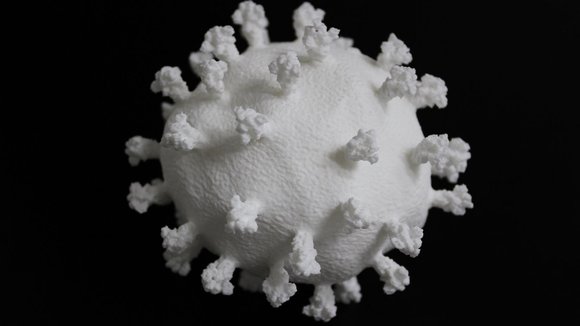Viruses often have a bad name. The coronavirus fits into the list of notorious viruses that have a major impact on mankind and society, such as HIV and Ebola. However, most viruses are very useful and even essential for our existence: they contain, for example, bacterial pathogens. In addition to the existing setups in Micropia with virus models of HIV, Ebola and the smallpox virus, the coronavirus can now also be seen. The new coronavirus, called SARS-CoV-2, is a strain that has not been identified in humans before. The virus can cause COVID-19 disease. Viruses from the corona family are normally found in animals such as cattle, camels and dromedaries, felines and bats. It is not common for a virus to spread to humans. This is called zoonosis.
Interactive corona exhibit
The new setup is a combination of a stuffed pangolin, on loan from Natura Docet Wonderryck in Twente, and a 3D printed natural model of the coronavirus. This model is made of plastic and is about 15 cm in diameter. In reality, the virus is about 125 nanometers in diameter. The virus can be recognized by the billet-shaped spines on the membrane, giving it the name 'corona' - Latin for 'crown'.
Free online talk show
In addition to the museum setup, the ARTIS-Academie organizes the free online talk show 'It's not the bat's fault' on Thursday September 10, which you can follow from the couch at home. Science journalist Maarten Keulemans (de Volkskrant) will host the talk show and there will be an interview with virologist Marion Koopmans and wildlife crime investigator Pauline Verheij, ARTIS veterinarian Martine van Zijll Langhout talks about zoonoses, philosopher Victor Gijsbers will present a column, Ype Driessen will provide a photo strip and Bruno van Wayenburg will provide an animation.
Micropia
For almost 6 years Micropia has been the only museum where the invisible life is really made visible. The museum wants to enthuse young and old for the smallest and most successful organisms; microbes. Micropia has already welcomed more than half a million national and international visitors and is an indispensable part of ARTIS, where animals, plants, microbes and stars come together in a monumental environment. In addition to being a physical museum, it is a place where science and the public come together, which is reflected, among other things, in Remco Kort's position as Micropia professor at the Vrije Universiteit.

